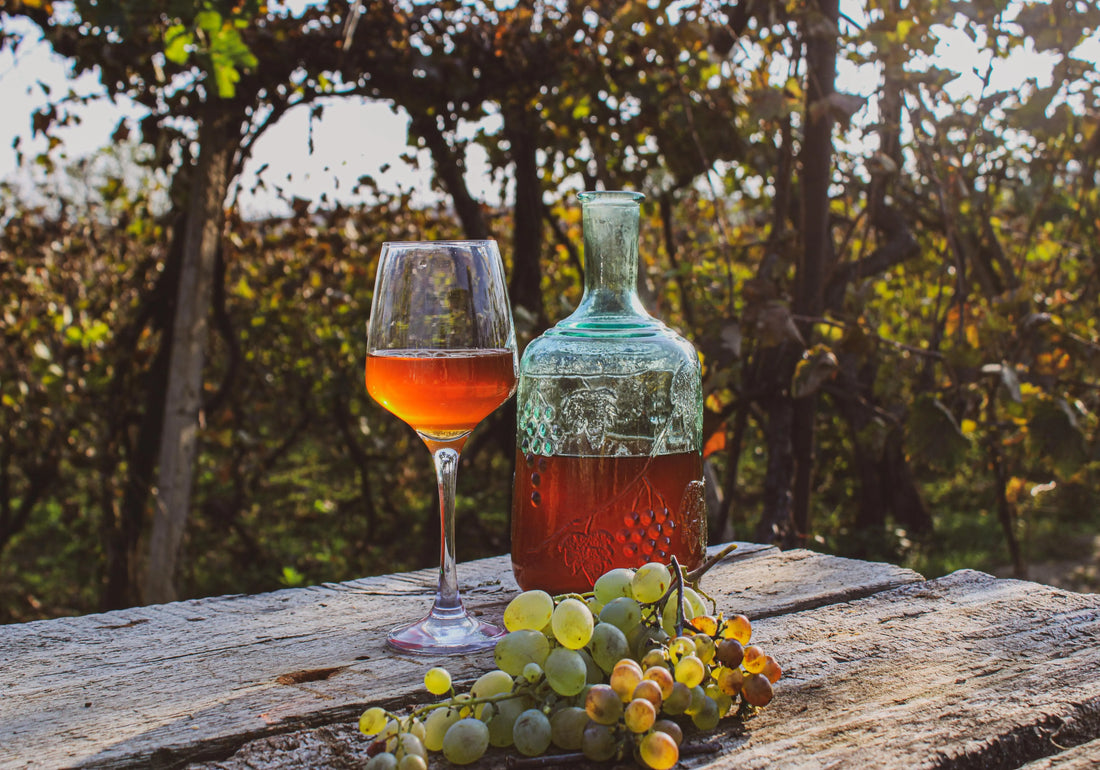
Tannins in Orange Wine -
Nina BaidoshviliCompartir
Tannins in Orange Wine - A Symbiosis between White and Red
In the world of wine, there are always innovations that awaken the curiosity and palate of lovers of this noble drink. One of those discoveries is orange wine, a fusion between the white and red world that has been gaining popularity in recent years.
 What role do tannins play in this “unusual” creation? We are going to talk about the connection between orange wine and red wine, as well as the differences and advantages that tannins offer in this unique wine.
What role do tannins play in this “unusual” creation? We are going to talk about the connection between orange wine and red wine, as well as the differences and advantages that tannins offer in this unique wine. The Link between Orange Wine and Red Wine: Production Method
During the production of orange wine, the white grape must is left in contact with the skins and sometimes the seeds for an extended period of maceration. This prolonged contact allows the extraction of color, tannins and aromatic compounds from the skins, which gives the wine its characteristic amber color and a complexity of flavor that is somewhat reminiscent of red wines.
Although orange wine has gained popularity in recent years, its origins can be traced back to ancient winemaking techniques dating back thousands of years. The orange wine making method has its roots in Georgia in the Caucasus, where evidence of buried clay amphorae (Qvevri) dating back more than 8,000 years has been found. These Qvevris contained wines made from white grapes fermented with their skins, resulting in wines that were amber in color and had a complexity of flavor that resembled modern orange wine.
Differences between White Wine and Orange Wine
Although both are wines made from white grapes, white wine and orange wine offer completely different sensory experiences due to the production method.
Color: While white wine is clear or slightly yellow, orange wine has an orange or amber color, derived from prolonged contact with grape skins during fermentation.
Flavor and Texture: White wine tends to be light, fresh and fruity, with little presence of tannins and vibrant acidity. In contrast, orange wine is more complex in flavor and texture, with a greater tannic structure and an aromatic depth reminiscent of red wines.
Orange Wine or Traditional White Wine?
Orange wine presents a variety of characteristics and unique experiences that differentiate it from traditional white wines:
Complexity of Flavor: Thanks to prolonged contact with grape skins, orange wine displays a complexity of flavor and aromatic depth that defies the expectations of a traditional white wine.
Structure and Longevity: The tannins present in orange wine give it a firm structure and a velvety texture that makes it ideal for aging in Qvevri or barrel and in the bottle. This allows orange wine to develop more complex and subtle flavors over time, making it an exciting option for wine aficionados seeking deeper and more rewarding tasting experiences.
Gastronomic Versatility: The tannic structure and complexity of flavor of orange wine make it perfect for pairing with a wide variety of dishes, from cheeses and charcuterie to meat and fish dishes with intense flavors. Its ability to complement and enhance the flavors of foods makes it a versatile choice for any culinary occasion.

A World of Color and Flavor
Orange wine is much more than a simple variation of traditional white wine; It is a sensory adventure that challenges conventions and stimulates the senses. With its seductive amber color, complexity of flavor and distinctive tannic structure, orange wine offers a unique tasting experience that deserves to be explored and appreciated. Whether you are a seasoned wine aficionado or a newcomer to the world of wine, we invite you to try orange wine , explore new horizons and enrich your palate.
